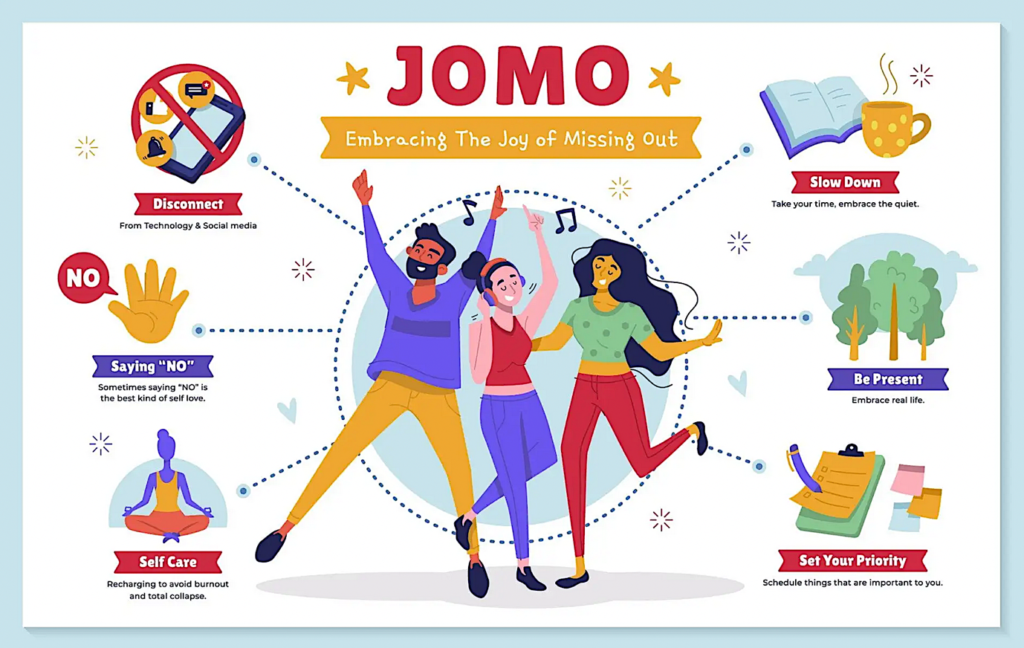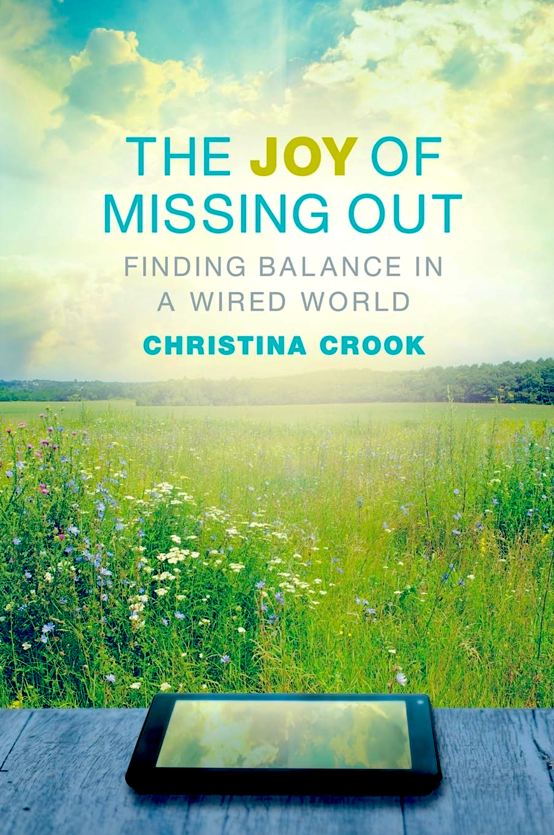AI generated image
Ever skipped a night out only to find yourself watching everyone’s stories with a pang of regret? You know the feeling. In this digital age, we’re all familiar with FOMO. It’s that sinking feeling when you scroll through posts of friends at a party, a concert, or just living their ‘best lives’ while you’re stuck doing something that suddenly seems… inadequate. Most of us have been there at least once.
FOMO (Fear of Missing Out) is a psychological phenomenon that evolved into a full-blown cultural and digital trend in the post-2000 era. The term, originally coined by Dr. Dan Herman—an expert in human psychology and the founder of the FOMO Authority Institute—gained mainstream traction with the rise of social media platforms like Facebook, Instagram, and Twitter (now X). It describes the anxiety or unease people feel when they believe others are having more rewarding or enjoyable experiences without them, whether a party, a travel adventure, a professional opportunity, or simply a viral trend.
While FOMO originates from a deeply rooted human emotion to belong and be included, it literally exploded in the digital age, particularly with the rise of smartphones and real-time social media updates. Constant exposure to curated and often-altered highlights from other people’s lives creates a distorted perception that everyone else is consistently doing better, having more fun or succeeding faster. This quickly leads to frustration, resentment and even depression.
Patrick James McGinnis, an American venture capitalist, popularized FOMO through his 2004 essay at Harvard Business School and his subsequent book on the same topic. The trend intensified through the 2010s, as influencers, brands and media outlets began to capitalize on the phenomenon as a core marketing strategy. ‘Limited-time offers’, exclusive invitation-only events, and countdown-driven campaigns are all examples of FOMO marketing. In essence, they work by triggering the emotional fear that if you don’t act now, you’ll miss out and regret it later.
While FOMO can affect anyone, studies show that younger people—particularly Millennials and Gen Z—are the most vulnerable. These digitally native generations are not only more connected online but also more likely to use social media to construct and compare their identities. Teenagers and young adults, who are still forming their sense of self-worth, are especially susceptible to the constant pressures and comparisons that social media fosters. In fact, seventy percent of Gen Z reports feeling left out after browsing social media—that’s FOMO in action.

Professionals can also experience career-related FOMO. Seeing peers change jobs, earn promotions or launch business ventures on LinkedIn can create stress and frustration, even when one’s own career path is both stable and fulfilling.
But, surprisingly, FOMO is not entirely negative. When managed wisely, it can motivate people to seize opportunities, step out of their comfort zone and become more socially active. On a personal level, it can encourage networking, skill-building, and taking calculated risks to avoid stagnation. For businesses, FOMO-driven strategies not only increase sales and brand visibility but also push innovation in marketing, forcing brands to create more engaging and creative campaigns. In this sense, FOMO can be a powerful catalyst for both personal and professional growth.
However, the downsides are also quite significant. Constant exposure to the curated highlight reels of others’ lives can lead to chronic dissatisfaction, diminished self-esteem, and mental fatigue. It fuels the flames of comparison culture, promotes unrealistic expectations, and can ironically lead to social isolation. This cycle can be particularly damaging for those already prone to insecurity, often making them feel inadequate or left behind. For many, it triggers compulsive behaviors—such as overcommitting to social events, spending beyond their means, or obsessively checking devices for updates.
FOMO also has a more subtle impact: it can erode your ability to be present and appreciate what you already have. It creates a state of perpetual longing, driving people to chase experiences not for their genuine value, but to avoid the imagined regret of being left out. This pressure to constantly participate can lead to overcommitment, people-pleasing, and eventual burnout.
In recent years, FOMO has evolved into a powerful social force, shaped by new platforms like TikTok and BeReal. Its influence now extends beyond social circles into politics, consumer culture, and travel. More than a passing trend, FOMO is a mirror reflecting how deeply connected—and often overwhelmed—we are in a hyper-digital world. It actively shapes our decisions, behaviors, and identities. While it can be harnessed for positive outcomes, it also demands a more conscious and reflective approach to how we engage with others and define our own self-worth. In an age of constant comparison, learning to step back and savor the moment may be one of the most empowering choices we can make.
And that’s how the antidote came about: JOMO, the Joy of Missing Out. This counter-trend encourages people to unplug, focus inward and find peace in solitude or offline life. It’s stresses the satisfaction of saying ‘no’, enjoying your own company and opting out of events and trends simply because they’re popular with everyone else.

In direct opposition to the overstimulating, comparison-driven world of FOMO, a new trend has quietly taken hold. JOMO represents a lifestyle shift—a conscious embrace of being offline, unplugged, and perfectly content with missing out.
Where FOMO thrives on the anxious illusion that everyone else is achieving more or enjoying life more fully, JOMO is rooted in mindfulness, intentional living, and the deliberate rejection of constant digital pressure.
The concept first emerged in the mid-2010s as a direct response to the fatigue and burnout caused by hyper-connectivity and social media overload. As people grew increasingly overwhelmed by endless notifications, compulsive scrolling, and toxic comparison, a movement to consciously step back began to form.
The term was popularized by leadership strategist and author Christina Crook in her 2015 book, The Joy of Missing Out: Finding Balance in a Wired World, which provided a blueprint for digital detox and mindful living. She further discusses the topic on her JOMO-themed podcast. Since its introduction, JOMO has evolved from a concept into a steady, growing movement fueled by a widespread desire to reclaim time, attention, and mental well-being.
JOMO resonates most deeply with those who have experienced digital fatigue firsthand: professionals burned out by ‘always-on’ work culture, parents seeking more authentic connections with their families, creatives in need of mental space, and even members of Gen Z who, despite being digital natives, are becoming increasingly aware of social media’s downsides and dangers.
It is also gaining popularity within wellness communities, among minimalists and those practicing intentional living. Introverts, in particular, often find that JOMO aligns naturally with their preference for solitude and reflection.

But JOMO isn’t about isolation or apathy. It’s the conscious choice of presence over pressure; the embrace of solitude without shame and the rejection of toxic, digital validation. It’s the practice of finding genuine happiness in “missing out” on the noise in order to focus on what truly matters.
JOMO encourages saying “no” to unnecessary obligations, clearing digital clutter, and rediscovering the joy of simple, offline pleasures: reading a book, spending time in nature, meaningful conversations with real friends, or simply doing nothing at all.
Over time, this practice has proven to be beneficial for mental health. By reducing social comparison and sensory overload, it lowers stress and promotes emotional balance. JOMO allows you enjoy the moment, and prioritize your authentic interests over trending ones. This fosters greater confidence in your choices, even when they diverge from the crowd. JOMO helps build emotional resilience and a stronger sense of self.
Unplugging from devices and staying offline boosts attention span, creativity and productivity while also enhancing the quality of real-world relationships. Free from the noise of others’ curated lives, people can reconnect with their own values and natural rhythms. JOMO reclaims hours once lost to passive scrolling and reinvests them in meaningful activities.
But, if not carefully balanced, JOMO can trigger social disconnection and lead to feelings of being out of touch or isolated from current conversations, events or communities. In professional or highly social circles, JOMO can sometimes be misinterpreted as aloofness or lack of ambition. While resisting pressure is healthy, there’s a risk of overlooking genuinely valuable opportunities if one becomes too inward-focused.
In recent years, JOMO has fueled the popularity of digital detox retreats, designated “no-phone zones” and offline hobbies like journaling, gardening and analog photography. Popular online platforms have noticed this cultural shift and rapidly adapted: Instagram now includes usage tracking tools, while Apple and Android offer built-in screen time management, clear signs of a society attempting to curb its digital overuse.

JOMO also intersects with broader cultural movements like minimalism, slow living, mental health advocacy or the ‘quiet quitting’ response to burnout.
Rather than an escape, it represents a conscious return to intentional choices, meaningful moments and emotional clarity amid societal pressure to do more, be more and share more. It challenges the modern myth that happiness lies in constant engagement, reminding us that true contentment is found in stillness.
In a culture that celebrates constant noise, JOMO dares to find joy in silence – a powerful act of self-care in its own right.
JOMO is widely regarded as a healthier approach for Gen Z’s mental health and identity development. Although the most digitally native generation, Gen Z is also the most susceptible to screen fatigue, anxiety and comparison culture. Studies show that high levels of stress, burnout and depression among young people are consistently linked to social media and relentless digital exposure.
At its core, JOMO means setting boundaries, being present and focusing on what truly matters. It promotes authenticity over performance, which resonates more with Gen Z.
Prominent figures have also publicly embraced and praised the trend. Acclaimed actress Emma Watson once said: ‘I’m a big fan of JOMO. It’s liberating to choose yourself, your peace, over constant social pressure.’
Yet here’s a twist: FOMO still drives action and social engagement, which Gen Z also values. When channeled positively, FOMO can be energizing. Brands, events and even activism campaigns such as climate marches or voting drives, successfully leverage FOMO to mobilize Gen Z.
Gen Z thrives by intentionally missing out on what doesn’t serve them, while consciously opting into experiences that align with their values, interests and personal growth. It’s basically about being digitally self-aware and in control – finding a personalized balance, which may differ from person to person. Psychologists suggest a key reflective question: ‘Am I doing this because I want to, or because I’m afraid of missing out?’ A growing number of digital wellness coaches and specialists now offer guidance to help individuals strike a balance between FOMO and JOMO, so as to manage their online activity to their best advantage. Common strategies include muting or unfollowing accounts that trigger FOMO, scheduling regular offline hours, for genuine rest, learning to say “no” with confidence and, perhaps most importantly, not to confuse being alone with being lonely.
It’s essential to be aware of how you personally respond to online content – what energizes you versus what drains you – and then adjust your usage accordingly. It’s basically about knowing your limits and honoring your core values, ultimately encouraging authenticity over imitation.
In recent years, several related concepts have gained traction in response to these social media dynamics. Inspired by Cal Newport’s book, Deep Work, the slow living and deep work movements emphasize focused, distraction-free productivity and a rejection of hustle culture. These ideas resonate with those seeking relief from burnout or hyper connectedness.

Another social movement, championed by figures like Tricia Hersey of The Nap Ministry, frames rest as a radical act, especially for Gen Z, an online-native generation increasingly vulnerable to exhaustion. In a similar spirit, more and more people are adopting digital minimalism by uninstalling non-essential apps on their smartphones or even reverting to older, basic-function cell phones from the 2000s.
We are also witnessing a cultural pushback against overly curated online personas. In its place, raw, unedited and authentically honest content is resonating more deeply with audiences hungry for genuine connection and relatability.
TV series like Eupohria and Black Mirror, along with documentaries like The Social Dilemma, show the immense pressure on young people to remain perpetually “on” in today’s digital landscape.
Younger users are growing increasingly aware that they’re being “fed” online content designed to manipulate their behavior – prompting some to reject algorithmic curation, carefully tailor their own feeds or switch to more transparent platforms.
Ultimately, the healthiest approach may not be choosing between FOMO or JOMO, but rather learning to listen to your inner self, set clear digital boundaries and act with intention. Trends will come and go, but preserving your mental clarity, balance and integrity must remain a priority. So, the next time you feel that familiar twinge of anxiety… pause. Ask yourself: am I chasing connection, or fleeing silence? In that stillness, you may just find your real joy and peace.

